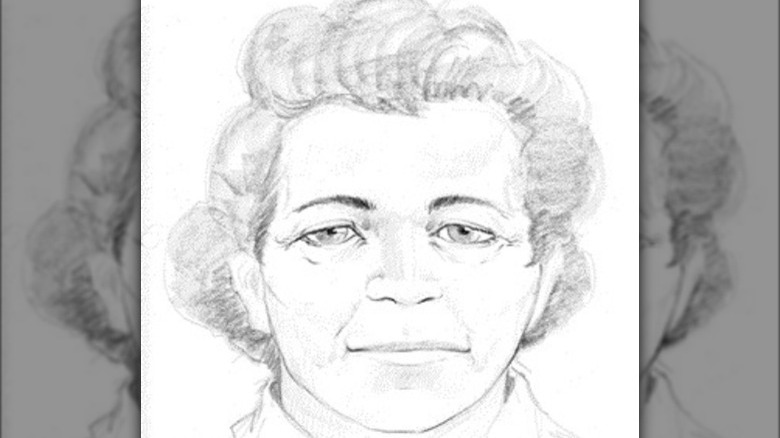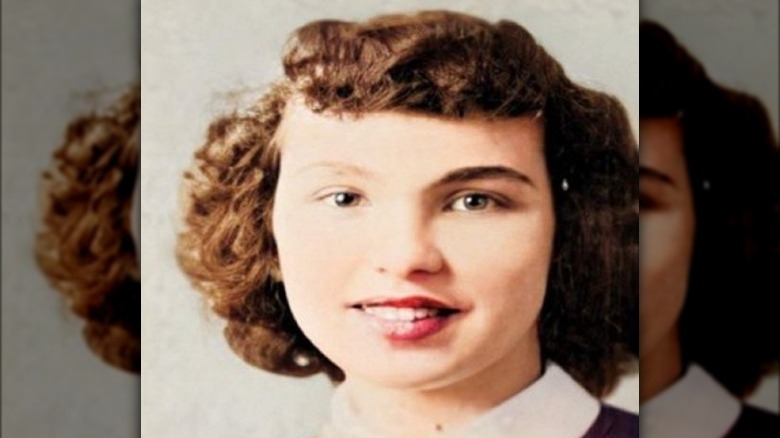How Crowdfunding Closed The Book On The Mojave Desert Jane Doe After 50 Years
On January 23, 1971, hunters were in a desert near a highway in Mohave County, Arizona, when they stumbled upon a sack with the label "Deer-Pak Ames Harris Neville Co." printed on it. The sack was tied with a rope, and upon inspection, the hunters discovered the body of a female inside (via Mohave County Sheriff's Office). The victim was estimated to be between 35 to 40 years old and was 5 feet and 4 inches in height. She was found wearing a long-sleeved blouse, a black cardigan, orange pants, and boots. As reported by The Arizona Republic, the woman had an indentation on her ring finger, which was presumed to be from a wedding ring. She also had what looked like a cesarean section scar on her stomach.
Efforts were done to identify Mojave Jane Doe via her fingerprints and dental work, but there were no matches. Missing persons reports in different states were checked, and there were no matches either. As noted by Forensic, the investigative team sought help from the Museum of Northern Arizona to provide a sketch of Jane Doe based on her skull, and it was released to the public in hopes that someone would recognize her. As time passed, however, no one came forward, and the case went cold.
Revisiting the case
Mojave Jane Doe's case files went untouched until 1999, when a unit was formed to revisit 60 unsolved cases, one of which was Mojave Jane Doe's. Investigator Lori Miller was assigned to the case, and she had to go through all the information from the beginning and still, she was no closer to identifying the victim. According to CBS News, it was in 2022 when the sheriff's office partnered with Othram Inc., a private laboratory that specializes in analyzing degraded, contaminated, or trace amounts of DNA. It was the help that the investigators needed in order to identify Mojave Jane Doe.
However, the fund to conduct the testing was another issue. Miller stated that the county didn't have a sufficient budget to push forward with the analysis but they offered $1,000. Othram Inc. helped by setting up a fundraising page on DNA Solves for Mojave Jane Doe. The goal was to raise $6,500 to be used for the testing necessary for possible identification. The sum was reached within five days, and the tests were conducted in late 2022. With the help of funding from the public, investigative research, and DNA testing, Mojave Jane Doe was finally identified 52 years after her remains were discovered in the desert.
Who was Mojave Jane Doe?
Investigator Lori Miller received the good news in January 2023. As reported by DNA Solves, Mojave Jane Doe was a woman named Colleen Audrey Rice. She was born on March 17, 1931, in Portsmouth, Ohio, and married a man named William Davis in 1946. Investigators contacted her living relatives, but they couldn't provide a lot of information about Rice, as she was reportedly estranged from her family. It isn't known how she ended up in Arizona. "We gave her a name, showed she was a person, and that she mattered," Miller told CBS News. The next step is determining the circumstances surrounding her death.
A 1971 news article from The Arizona Republic stated that Rice was strangled to death. Back then, a cop guessed that she was killed by her estranged husband, but there's no evidence to support the claim. The Mohave County Sheriff's Office is seeking help from the public in order to identify Rice's killer. Anyone who has information about the crime is asked to contact the special investigative unit at 928-753-0753 ext. 4408.


